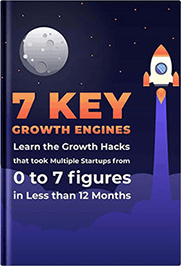
TED Talks are non-profit conferences where experts from various fields give discussions in their areas of expertise. TED is an acronym of technology, entertainment and design but the subjects covered have since extended on matters concerning human experiences. TED Talks have become quite been popular because of the simplicity of presentation where each person in the audience can understand. Complex concepts become simple concepts. The speakers usually have a way to capture your attention and think big and challenge you to push beyond your comfort zone.
While not all Ted Talks relate to Marketing, here are five Ted Talks on Marketing that you should consider;
1.David Carson: Design, Discovery and Humor

Carson, a graphic designer was the speaker for this TED Talk. He overcame all odds in an industry that uses systematic methods and principles by use of an innovative and creative approach. He has a style of aggressiveness and controversy in his work.
When you apply his way of life to entrepreneurship and marketing areas you will reap benefits. Your business can’t stand alone; it needs support from different parties especially customers. Customers’ daily preferences and demand keep your business running. Approach individualism in a positive manner and your revenue will increase.
This TED Talk shows the importance of ‘communication’ and ‘legibility’ in marketing. Do not confuse the two. Do not confuse legibility for communication. The ideology of communication over legibility is at the center of upholding a durable brand in the modern entrepreneurship.
Communication creates a relationship between your brand and consumers. In today’s society, we must opt to send a strong message to our potential customers, not just any message but a message that is interesting, unique and creative as a way to capture targeted audience attention.
He couldn’t forget to discuss the future of design before ending his talk. He spoke about how the era of new technology is complicating our relations, and how cooperating marketing and humanity into our design will make our brand stand out from the rest.
You should note that whatever size- big, small or medium- your company is, you will benefit from thinking analytically about individuality in the world of design and how to personalize your brand that your customer can relate to.
2. Renny Gleeson: 404, The story of a Page not found

We all get frustrated when we visit a website but later we cannot find it. Error 404 appears. Error 404 is also referred to as ‘page not found’. Renny Gleeson focuses his TED Talk on error 404; he interprets disappointments to be an opportunity for building your brand.
In his four minute presentation he runs a slideshow of funny 404 pages to capture the attention of his audience. He used it to explain how disappointments can be turned into viral marketing and positive customer engagement.
He inspired his audience to take setbacks as land of opportunities that one can use as a growth opportunity. For example, when you come across the error 404, you can take that opportunity to integrate a better content and creative design to develop your brand. This allows you to connect and reconnect with your current and new market.
In this TED Talk, it is about the opportunity for brand creativity. Your site visitors, your current and new social media followers would like to see a great, entertaining, interesting, outstanding and engaging content. At the end of the day, it is your decision on how you are going to view setbacks.
“Little things done right, matter and well-designed moments build brand’’ Renny Gleeson.
3. Malcom Gladwell: Choice, Happiness, and Spaghetti Sauce

Malcom Gladwell is a well-established author—some of his most popular books are Blink and The Tipping Point. Gladwell is gifted in turning technical strategies into interesting stories.
His TED talk is based on the study by Howard Moskowitz, a psychophysicist. Moskowitz is known to challenge companies during the 1970’s and 1980’s on how they align their products with their brand.
Gladwell emphasized that there is a lot to be learned from Moskowitz like how you can use data-driven buyer personas to assist you to make decisions on how to provide the most possible value to your customer base. He brought an era of change to the marketing world.
Before Moskowitz’ research, companies viewed product development as one-way towards one ideal item, as perfectly fitted with desires and needs of the customer base as possible.
In the past, market research was based on traditional focus groups. Companies would gather different sample-consumers and then ask them what they preferred.
This method was not effective and therefore Moskowitz came up with a new one. He saw two major drawbacks. One, he saw there was no such thing as a perfectly optimized product.
Gladwell supported this point by mentioning Pepsi in his TED talk. He said that Pepsi focused their attention on building the perfect Pepsi instead they should have focused their attention on building the “perfect Pepsis”.
He shows us the need to embrace a diversity of taste and preference. Businesses and industries should learn from this. Expanding your horizons doesn’t hurt your brand it only increases your customer base and allow you to reach an untapped market that you didn’t know about.
The second drawback was that people could not really express what exactly their desires in a product are during a traditional focus group or survey. They were sometimes limited to choices set on the table.
The bottom line is there is not a one size fits all solution for all consumers.
4. Sheena Iyengar: How to make choosing easier

Iyengar discusses the choice overload problem, where you are presented with different choices but you can choose which one you want. She presented it like widening your brand horizon too thin, making it invisible and hard to interact with.
She conducted a case study on a local grocery store when she was a graduate student. The grocery store was known to have an excess of different options on all products offerings. She always wanted to know if this promoted revenue or not. She sought permission from the store manager to begin a research on this topic.
She started the ‘free sample’ in the store and two rounds. One run had 6 options while the other had 24 options. At the end of the study, she noted that when there were more options 20% more people didn’t purchase which obviously led to lower revenues.

In addition to her study she also noted that many people bought a jar of jam when they stopped at the table with fewer options.
This illustrates that fewer options generally work more effectively as a marketing tool than many options.
The presentation also explains why when people are subjected to too many options they will ‘choose not to choose’, a result of something called ‘choice overload’ if the choice is something of greater import.
The four techniques to counter choice overload problem are, the ‘4C’s’:
- Cut
- Concretization
- Categorization
- Condition for complexity
We all face choices daily and we have a habit of making the easy choices first and then difficult ones later. In business, a potential client will consider a product that interests him and later take action.
As a marketer, it is prudent of you to assist your customers in decision making by allowing them to make one easy, high-level decision first. And later move to the more detailed oriented choices. . If you fail to do this, some of your prospects will not purchase your product.
There are similarities between Iyengar’s and Gladwell’s speech. They are talking about the same problem but use a different approach. However, the two show how usually human beings behave and the importance of developing marketing strategies in accordance with these behaviors.
5. Seth Godin: The tribes we lead

Seth Godin is a very famous blogger and entrepreneur. Seth Godin discusses societal trends on this Ted Talk. He views societal trends as living in the moment- the right now – otherwise known as the cultural moment. Focusing on the present time is very important in the way ideas are created and how they are spread.
Seth shares how during the 50’s, as television advertising had just started, the best way to spread an idea was to mass market it. The idea itself could be mediocre and it didn’t matter.
As our world turned to a digital age, the mass market method of marketing is quickly diminishing with the arising of a seemingly endless series of tribes. The internet has taken over from mass marketing and made marketers change their gameplan and start targeting niches.
Tribes have been here since time immemorial as a representative of sociocultural grouping mechanisms. Godin explains how these tribface has evolved to be ideological groups in the modern age.
He uses the example of TOMS Shoe to explain this phenomenon. In this scenario, the ‘millennial’ is the tribe. They view the millennial as having social morals but do not know how to give back to the society. The founder of TOMS Shoe, Blake Mycoskie tapped this idea for the benefit of all by creating a product that tells a story that is appealing to its targeted audience.
For every pair of shoe purchased, TOMS donated an identical pair to a person who doesn’t have the means to buy one. By doing this not only did TOMS find a perfect and potential customers but also made them the promoters of their brand by giving back to the society.
According to Seth Godin, TOMS Shoe came up with a good plan to challenge status quo. TOMS Shoe is building their brand while contributing to a better society. This is the essence of socially responsible entrepreneurship.
Conclusion
These TED Talks contain information that you won’t normally find if you take a digital marketing course, and are meant to change your way of thinking about your customer, brand, product/ services and yourself. It shows you how you actually may be missing opportunities and how to turn setbacks into growth opportunities.
In summary;
- David Carson explained the ideologies of communication over legibility and individualism approach.
- Renny Gleeson interprets error 404 as disappointments that can be turned to opportunity for building your brand.
- Sheena Iyengar discusses the problems associated with overloads. She encourages few options to make choosing easier.
- Gladwell and Iyengar showed us two different approaches to the same problem (juxtaposition). And delivering the right desires of your customer base.
- Seth Godin showed us that consumers form cultural groups in this digital era and how they are moved by ideas that appeal.
You can browse TED’s website and view more videos for free.




